If you notice such behavior, leave your pet alone and carefully analyze what provoked it. By eliminating the irritating factor, you will avoid new outbursts of anger.

- Cat attacks the owner: the main reasons and options what to do
- Improper training.
- Breed characteristics
- What the owner should do in response to a cat's aggression
- Scold
- Reeducate
- Showing care
- Playful Attitude.
- Diseases
- Cases of critical aggression
- Unsatisfied sexual instinct
- If the cause is not clear
- Rabies
- What an owner should do if a cat bites and attacks
- Educate
- Treat
- Rules of bringing up an animal
- A trusting relationship
- Proper play
- Forming the right reaction
- Additional measures
- Manicure
- Anti-scratch pads
- Territorial aggression in a cat. What to do
- Aggression during the sexual hunt
- Why does the kitten bite all the time
- Teething or growth spurt
- Training and instinct
- Willingness to play
- Why an adult cat might bite
- Protection
- A surge of energy, a thirst for play
- Revenge, resentment, jealousy
- Willfulness and aggressiveness as a character trait of a cat
- Cat aggression as a consequence of faulty breeding
- Maternal aggression in cats
- The nuances of fostering a kitten from the first days of life together
- Recommendations for raising kittens
Cat attacks the owner: the main reasons and options what to do
Cats are some of the most popular pets in the world. Millions of people adore and love them, although there are dangers associated with their razor-sharp claws and teeth as serious as infections. For those who have encountered the problem of a cat attacking its owner, the question of the reasons for this behavior remains open.
There are several reasons for the aggressive behavior of a four-legged friend. If the owner learns to distinguish between them, it is possible to manage the animal and control its behavior.
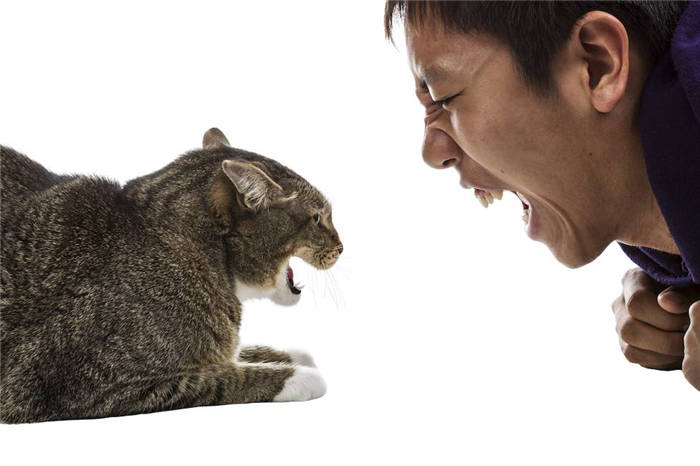
A cat attacking its owner is a negative manifestation of the animal's character
Here is a list of the most accurate signs of aggression and agitation in domestic cats toward their owners:
If an owner discovers these signs in his or her pet, he or she should be extremely careful with the pet, as the threat of an attack by the animal appears.
Improper training.
Attacks on the owner by an adult house cat are often related to his improper upbringing since childhood. A small kitten is not weaned from the habit of biting its owner's leg or hand. Lack of punishment is an incentive to continue such behavior.
Important! At an older age, such attacks on the owner by the kitty become a habit, which eventually develops into bad parenting.
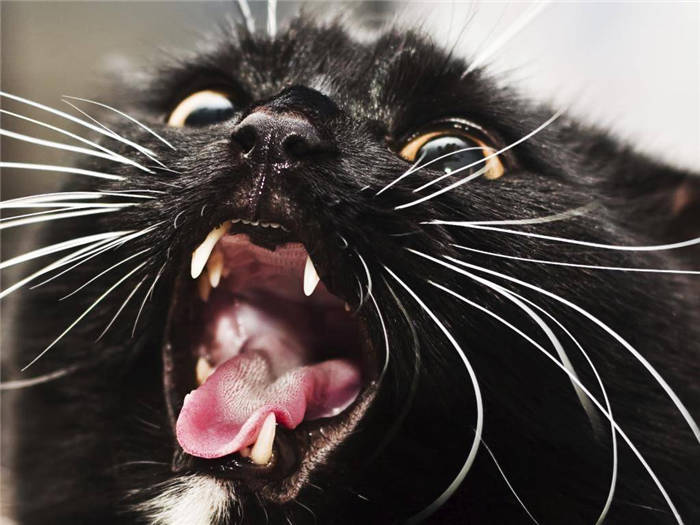
Breed characteristics
The predator instinct is one of the manifestations of the cat's natural characteristics. This behavior is characteristic of play. However, play is only for humans, while for the pet it is hunting.
Sometimes a cat's growl is related to its desire to show itself as the master of the situation. Even if the pet is the only animal in the house, its hunting instinct manifests itself on a genetic level.
What the owner should do in response to a cat's aggression
If the owner is fed up with the constant attacks from the pet, it is necessary to begin to educate him. The owner should do everything possible to ensure that the cat has no desire to lunge at the child or strangers.
Scold
You should not scold a cat when it tries to attack its owner. The feline temperament is such that these animals can remember the insults they have suffered.
The best way is not to scold, but simply to ignore. This means completely unresponsive behavior, even with words. Only then will the cat understand the reason for the owner's attitude.
Reeducate
When reeducating the pet, the following recommendations should be followed:
- Do not play with the cat with your hands and feet;
- buy only those toys that allow you to play at a distance with the owner (fishing rods, wrappers on a string);
- if the cat got hold of your hand do not pull it out sharply. In this situation it will be even more angry and it will only increase its aggression. You should wait until the cat will let go of your hand and then stop playing. This way the cat will understand that aggressive behavior is a reason to stop playing and communicating with the owner;
- to make the kitten grow up calm and peaceful, you should give it more time, love and affection;
- in the process of education, be patient with the animal, do not beat him. Education should be accompanied by patience on the part of the owner. The animal should be helped to realize the bad behavior.
Important! Training and education of the pet should be carried out from the first days of appearance in the house. Only in this case, the process will be effective.
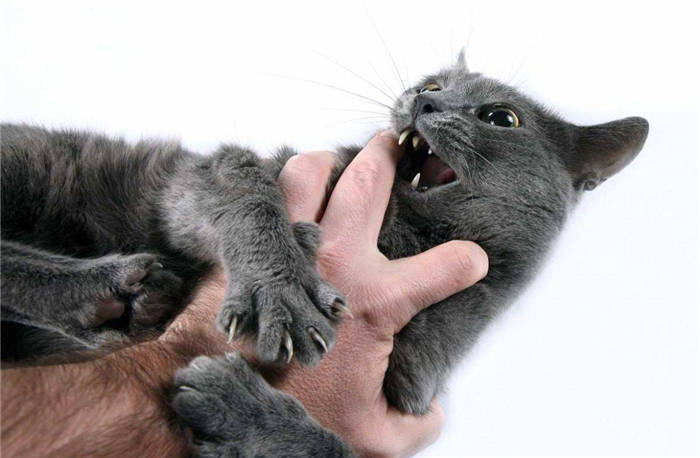
Showing care
Showing care, affection and love is an important rule in combating a cat's urge to pounce on its owner. Manifestations of care include:
Playful Attitude.
One of the main reasons why a cat bites its legs is boredom. The owner should remember to diversify the animal's environment, give it a toy, play together and carefully hide items that are not desirable to become the object of the pet's interest.
A cat can have dozens of toys, but the excess can become boring. Therefore, you should hide some of them, and exhibit only some of them, and after some time change their places. In this case, the cat will treat the previously hidden toys as a completely new object and will again show interest in the object.
When the cat jumps up to bite, the owner can throw him special toys, previously frozen in the refrigerator, or ice cubes. Biting such cold materials will calm the cat.
Warning. This method is especially suitable for small kittens with itchy teeth. After all, by biting their owner's legs, they are trying to soothe their painful sensations through play.
Biting the feet is a way to get the owner's attention when the cat wants to play. You should pay more attention to the cat and play with it more often, and then the problem will be solved.
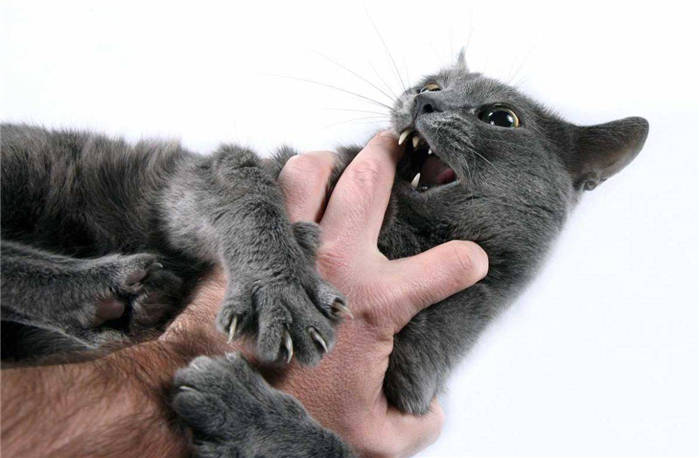
Diseases
Why cats rush to their feet in order to bite becomes clear when it comes to the health of the pet. This is the worst case scenario when a cat's brain disease, such as a tumor, is the cause of this behavior.
This type of pet health problem can turn the sweetest little kitten into a mad beast. Aggression caused by the disease does not appear all of a sudden. Changes happen slowly as the disease progresses.
It's not just brain diseases that can negatively affect a cat's behavior. Other diseases have similar effects, too. Especially those who have it long and debilitating.
When sick, the cat may be uncomfortable and aggressive. The best solution in this case is a visit to the veterinarian, an accurate diagnosis and timely treatment.
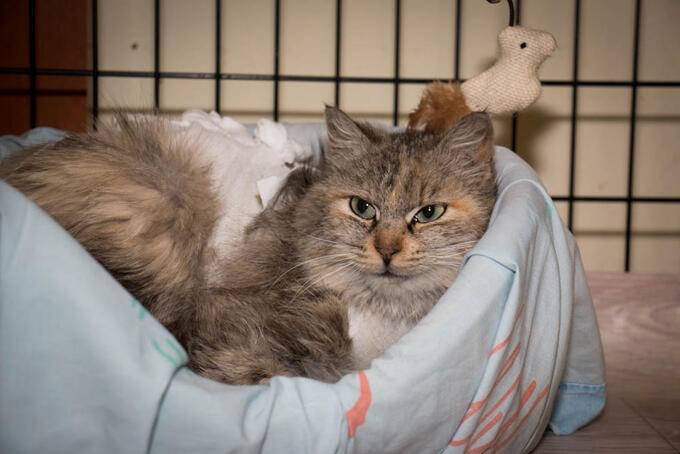
A medical condition can cause aggressive behavior in a cat
Cases of critical aggression
In addition to the situations analyzed, in rare cases aggression is possible that cannot be corrected by conventional methods. Medical intervention is necessary to extinguish it. Otherwise, an animal in an insane state can cause serious injury to humans.
Unsatisfied sexual instinct
Negligence in neutering and lack of mating can lead to a serious problem in the future. If your neighbor has a pet of the opposite sex, your pet's hormones can reach dangerously high levels, which may result in redirected aggression toward your own household. Stopping the release of sex hormones usually helps in controlling this behavior.

If the cause is not clear
If you have not been able to assess the cause of aggressive behavior, it is worth seeking help from a veterinarian or a zoopsychologist. Both specialists will assess the health condition, rule out neurological disorders and try to understand the pet's motivation. Once the diagnosis is made, treatment will be prescribed, and the owner will be advised on methods of correction. The further future of the animal is entirely in the hands of the owner.
Rabies
The rabies virus is deadly for mammals, including humans, so it is necessary to be clearly aware of the main signs of its manifestation. Infection occurs when the saliva of a sick animal comes into contact with wounds or mucous membranes and is most often manifested by the following symptoms:
The patient should be isolated in a separate room to prevent the virus from spreading. There is no cure for this infection. The only way to protect yourself is timely vaccination.
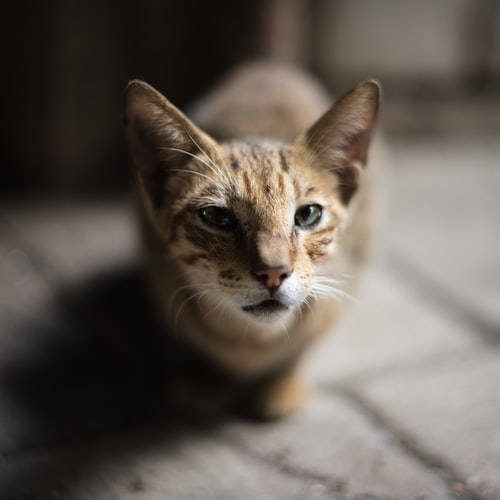
What an owner should do if a cat bites and attacks
To understand what to do if a cat attacks the owner, it is possible to identify the cause of its aggressiveness. The problem encountered is solved by proper education or treatment.
Educate
Regardless of the cause of the pet's unwanted behavior, retaliatory aggression on the part of the owner is unacceptable. The best effect on animals is to be ignored. If the attack occurs during playtime together, leave the room defiantly and do not engage with the cat until it calms down.
Education begins from the first days of the pet's arrival in the house. If the moment is missed, it will take more time. Adults find it more difficult to overcome established habits than kittens.
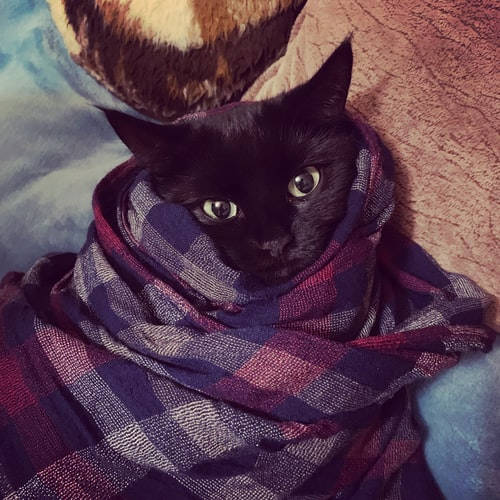
- Avoid playing with your hands. Revise your arsenal of toys in favor of teasing rods and mice that are suitable for displaying your hunting instinct.
- Don't lash out when another conflict arises: this will reinforce the hunting or protective instinct. Stop the movement and remove your hand when the grip loosens and leave immediately.
- Purchase a scratching post. Make sure the type you choose is appropriate for your pet. The scratching post will not only shorten the length of the claws, but it will also take up some of the energy.
- Get another pet. If the reason for aggression is the lack of attention, an additional playmate will quickly solve the problem.
Arm yourself with patience. Over time, your efforts will surely bring results.
Treat
If a disease is detected, the problem is corrected after it is cured. Prolonged and frequent attacks involve a mandatory check-up with a veterinarian.
A cat with a pronounced sexual instinct will have to be neutered. A psychiatric disorder will require long periods of medication, but rabies cannot be cured. The patient will have to be isolated in a special box to confirm or disprove the disease. A favorable prognosis is possible only if there is a vaccination against the virus.
Rules of bringing up an animal
It is known that cats are resentful creatures and highly susceptible to stress. Therefore, when trying to wean a pet from scratching, it is important to remember the golden rule – the cat should not be yelled at, scolded or physically punished. The pet should be brought up in a friendly environment and establish warm contact – only this method will produce results.
A trusting relationship
Before any educational measures are taken, a relationship of trust should be established with the cat. Here we should remember that a cat "assigns" itself a friend, considers the person to be like itself and builds appropriate relationships – it can share food, show friendly or even romantic sympathy, entrust its place or, in rare cases, its offspring.
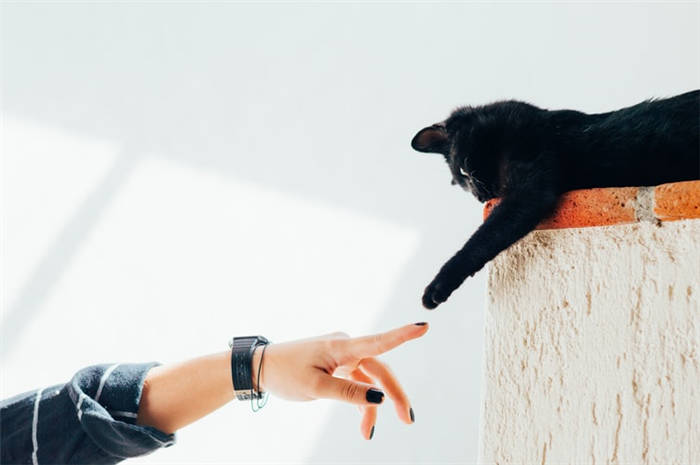
Relationships need to be built from a young age – that is, from the moment a kitten comes into the house. But there are cases when a person takes an already adult individual – then the friendship must be established gradually, gaining the trust of the animal.
Proper play
Play with the cat should be special toys and in no case hands. If the kitten is used to scratching and biting its hands, it will continue to do so at an advanced age.
If you have an adult cat with an inappropriate habit, you need to gradually wean it from biting and scratching by directing its hunting lunge at a ball, a ball or a toy mouse.
Forming the right reaction
Cats generally listen to their own instincts, habits and feelings, so the best way to wean a cat off claws is to develop a subconscious response.
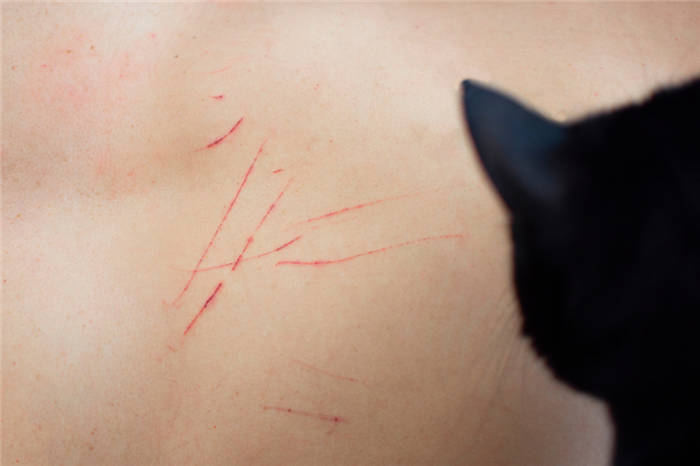
If you do not like the cat's scratches, it is necessary to resort to a reciprocal action, which will help the cat to understand that the person does not like claws. To which action the animal quickly develops a reflex:
Additional measures
Additional measures to deal with cat scratching should not be forgotten. These measures, combined with educational measures, will help the owner to go through the period of weaning the cat more comfortably.
Manicure
Feline manicure is a very important activity for all cats living at home. It is done with the help of a special tool – claw cutter, which is selected individually according to the breed, features of the claw, the nature and behavior of the animal itself.
This procedure is unpleasant and can be traumatic for the cat, so you should become thoroughly familiar with the topic before starting the procedure. If the breeder has difficulties and concerns, a groomer or veterinarian should be consulted.
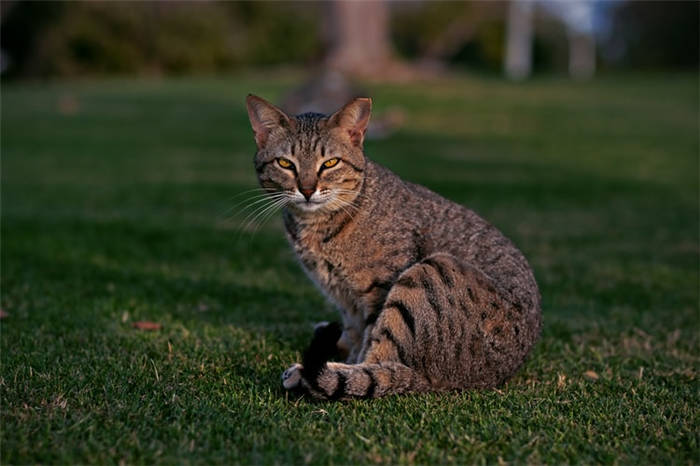
Anti-scratch pads
Some breeders resort to the use of special pads that prevent the cat from scratching and damaging the furniture, even if the pet releases claws.
Anti-scratching pads are made of silicone or rubber, and less often plastic. They come in different colors and are attached by means of special glue.
The pluses of the pads – the cat will not be able to scratch anyone, damage the furniture and flooring. This is especially convenient for families with small children, who can cause the pet stress or pain and get scratches in return.
The pads are also useful to owners of a characteristic, unpredictable cat with whom there is no way to build a trusting relationship. And the most important plus is that the cat can't hurt himself with his claws. This can happen with skin diseases that cause itching and burning. With anti-scratchers, the cat won't make additional scratches.
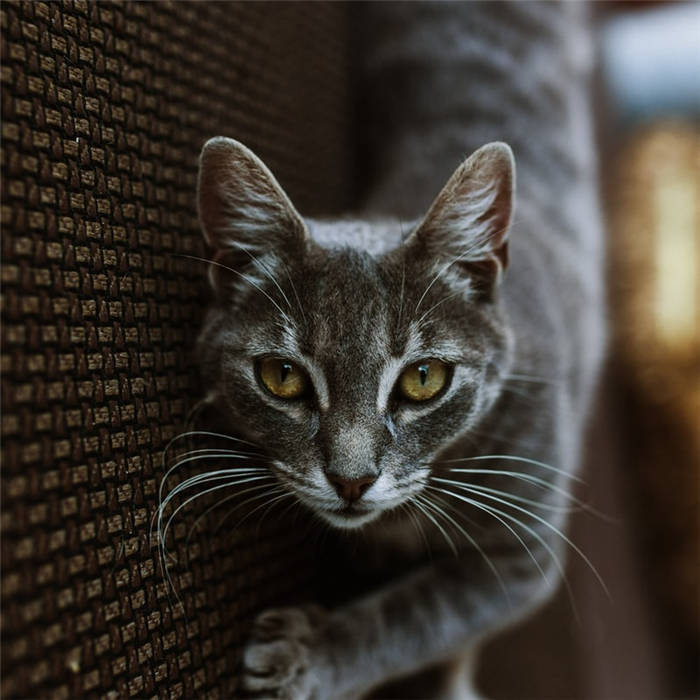
The pads also have disadvantages: if the cat goes outdoors, the pads are absolutely contraindicated for him – outdoors, the claws are the cat's defenses, and without them it's impossible to climb, for example, a tree.
Territorial aggression in a cat. What to do
In the feline family, there is always a struggle for territory. They choose the leader of the pack in fights and constantly try to overthrow him. If a cat is aggressive, it may be fighting for the alpha position in the pack. A cat can show its aggression in the fight for territory to either a person or another pet. To pacify such a pet, you need to show that the place of the leader in the pack is already yours. Establish a hierarchy in which the cat takes the place of the younger one.
After giving birth, some cats develop maternal aggression. An angry mama cat can attack and fight until bloody, saving the lives of her babies. To avoid provoking the mother cat, stay away from the kittens until they are two weeks old. And move the nest with the babies to a quiet place where no one will disturb the pets.
Aggression during the sexual hunt
Cats often attack humans during puberty. Cats are especially aggressive when they smell a female during heat. Often an unsatisfied pet becomes nervous, angry and shows aggression for no reason.
Aggression attacks in a cat after surgery are related to the pain the pet is experiencing. The cat is not feeling well and thus signals the owner about it. Stress, pain, and healing stitches cause anxiety in the pet. Anesthesia is hard on the pet's mental state. It often takes him several months to recover from surgery.

Why does the kitten bite all the time
If a kitten constantly bites and scratches, owners will sooner or later wonder why this happens. Cats are originally predatory animals that still have the instincts of wild animals. Kittens and outdoor cats in particular often display these instincts, whereas domesticated adults are more cultured.
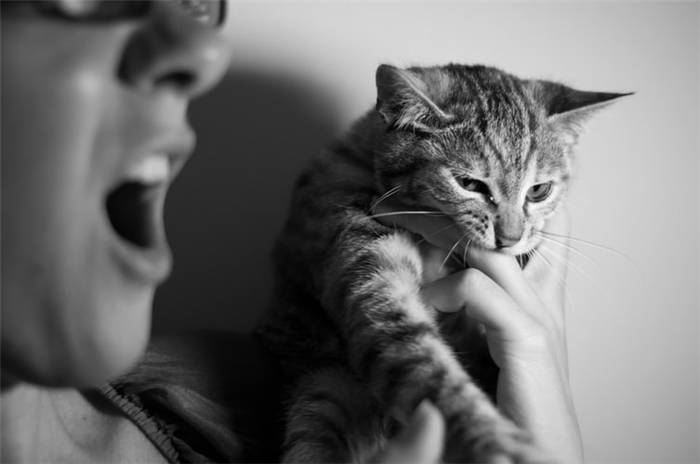
Teething or growth spurt
Teething, both in children and kittens, occurs at an early age and causes much discomfort to the baby. Their gums are itchy and inflamed, so they chew on everything in their path, including their owners' hands and feet. This can help relieve the itching and a little soothing of the gum rash.
The solution is to buy special toys that kitty chews on instead of his hands, shoes and furniture.
Training and instinct
Kittens at an early age do not fully understand that they are safe at home, provided by humans. Their hunter instinct gives them the signal to train their hunting and defense skills while playing.
The owner also becomes an object of attack, as age, lack of experience and upbringing allow kittens to see humans as "danger" or "prey" while playing.
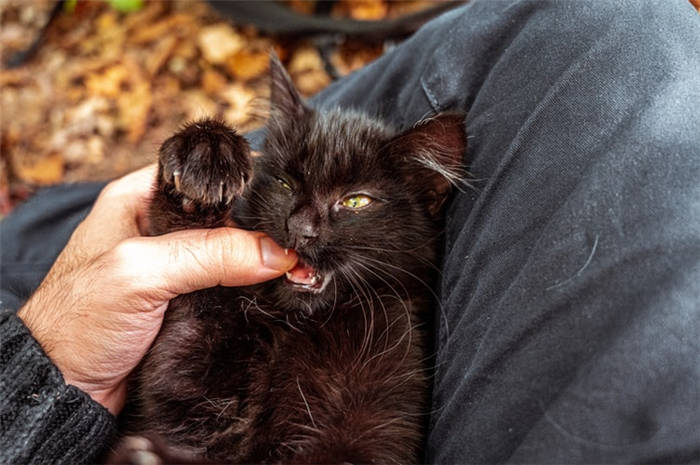
Willingness to play
In kittens at an early age, all activity comes down to play. They may not have enough space or toys in the apartment, and all their energy is directed towards playing with the owner – a living being who is a play partner.
In any case, at an early age, pets bite not out of malice, but out of boredom or overflowing energy. The right methods of weaning and diversifying their leisure time must be chosen.
Why an adult cat might bite
Adult cats can have plenty of reasons to bite humans, too. If you wonder why a cat bites for no apparent reason, you should assume the following options.
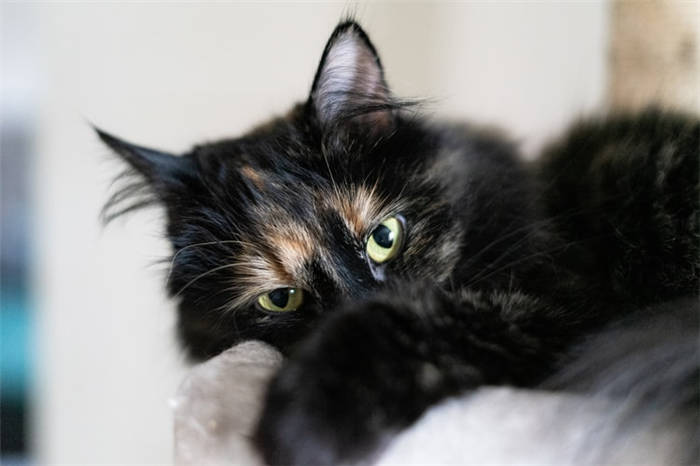
Protection
To explain why a cat bites, it may be necessary to protect: both itself and its offspring. In the case of self-defense, it is worth paying attention to the animal's past. If the cat has had experience living on the street or cases of mistreatment, it may remember these moments and expect a slap from the owner's hand instead of affection.
In the case of protection of offspring, it's simple – it's a natural instinct. Cats during this period have few people to trust, even their beloved owners. If you try to pet the cat or take the kitten away, you risk encountering aggression in the form of biting.
A surge of energy, a thirst for play
Adult and even elderly cats also want to play, and it happens quite often. You can observe the cat running around the apartment, climbing on the headsets, cabinets and other tall objects, as if escaping from the chase, or lurking in a hunter's pose and about to attack a rustling bag or the owner's leg. At these moments you can understand why the cat bites or scratches – he's just playing. And invites the owner to join in the game.
Revenge, resentment, jealousy
Owners can yell or physically attack the cat for mischief or a spoiled item. Some cats are by nature very resentful and even vindictive. Punishment, however lightly, can offend the cat, after which it becomes aggressive – does not allow itself to be stroked, bites and scratches.
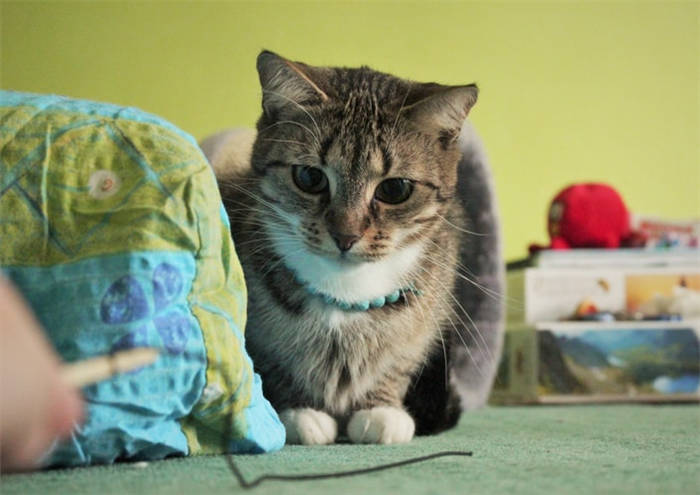
Another type of resentment is jealousy. Cats may be jealous of their beloved owners for new family members or other pets. To avoid this situation, try to give everyone equal attention.
Willfulness and aggressiveness as a character trait of a cat
The aggressive reactions observed in domestic cats are closely related to the natural behavior of this species while playing, hunting or in a conflict situation. Shyness, resentfulness, unsociable or, conversely, wanting to be the center of attention are character traits that manifest themselves in varying degrees and fit into the norm.
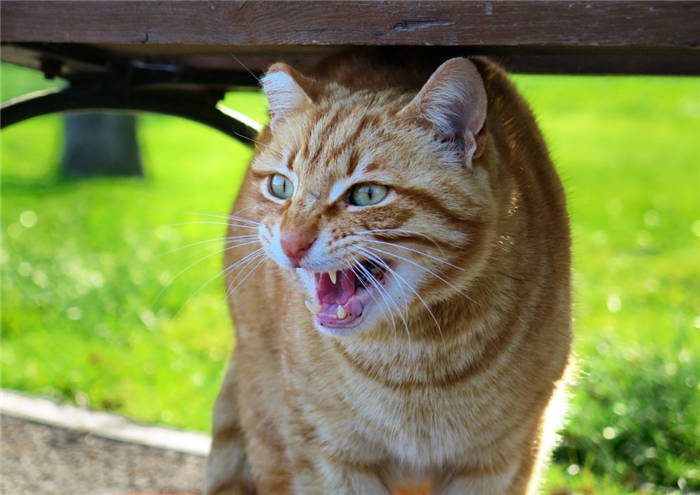
Studies show that one-third of behavioral differences are due to hereditary factors. Selective selection focusing on external characteristics such as body structure, coat and eye color has an indirect effect on an animal's temperament. It is believed that the older the breed's history, the greater the risk of behavioral abnormalities.
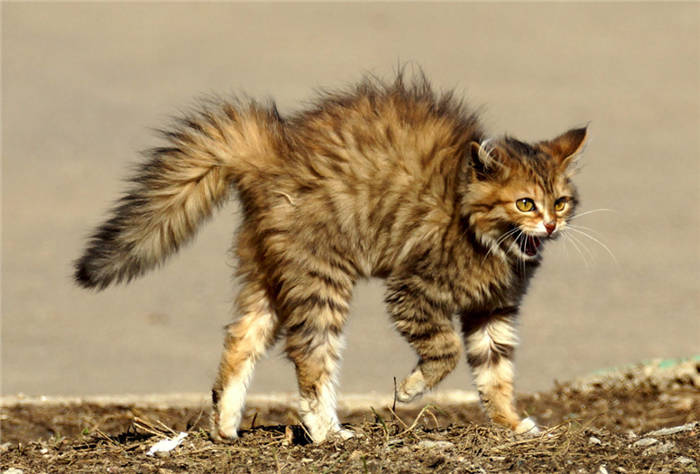
Another factor that explains the individual tendency to show aggression is psychological trauma. Animals whose lives began in an unfavorable environment develop persistent self-defense mechanisms. An abused cat easily succumbs to fear and may do unpredictable things at the slightest hint of a repeat of this situation.
Cat aggression as a consequence of faulty breeding
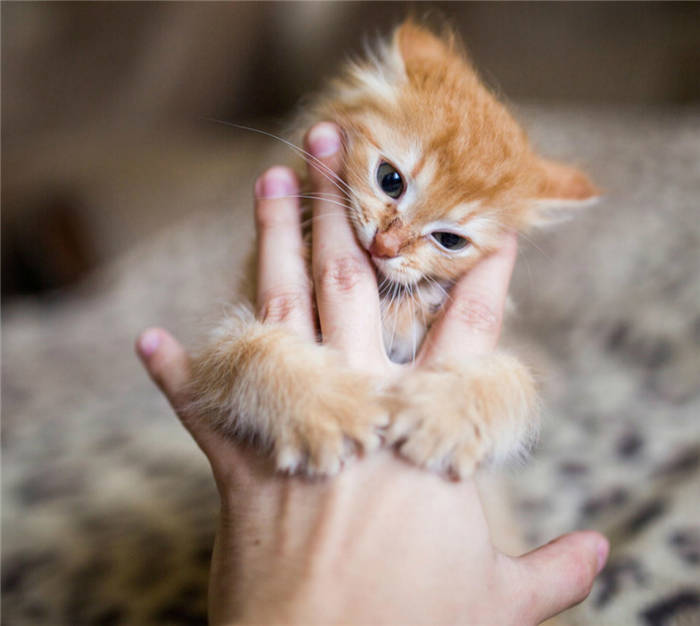
Encouraging aggression while playing with kittens is the most common mistake made by owners. Mild biting and funny attacks of a furry friend over time can turn into real fights with the use of sharp fangs and claws. A human hand that has become a sparring partner during funny training sessions will be perceived as an opponent in other situations as well.
Equally misperceived are a kitten's first experiences of dictating his will. When he attacks and bites, begging for a treat or defending his territory, you need to do the right thing in response. What to do? A light spanking with newspaper, a stern reprimand and deprivation of a treat, coupled with the encouragement of calm behavior, will help to establish control and reduce the likelihood of aggression in the future.
Read also: How do you catch a feral stray kitten who is afraid of people, or an adult feral domestic cat yourself?
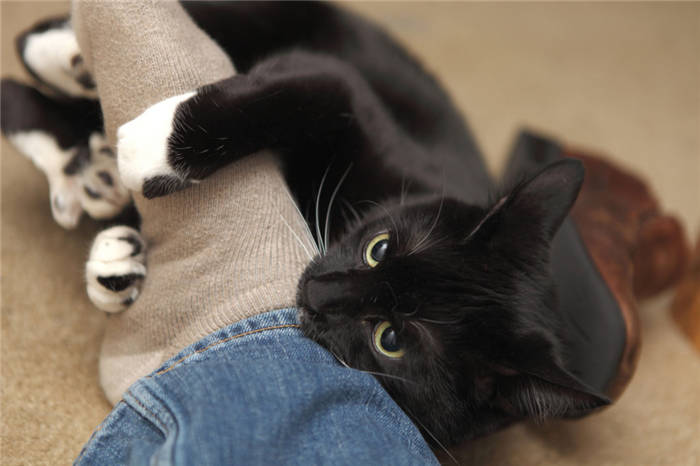
Unexpected "overstepping of authority" on the part of a pet, especially when it bites painfully, frightens owners and causes reciprocal aggression, which only stimulates bad tendencies. It is important to suppress the first emotions and learn to understand the pet's body language, because in fact, a cat rarely attacks without warning. If you recognize the tension in time, there is a real chance to extinguish the aggression with your calmness and distractions. Such counteraction will prevent the problem from developing.
Maternal aggression in cats
Maternal aggression in cats is something that people are often unprepared for. Problems with aggressive behavior often begin during pregnancy and escalate into something more after giving birth. But many people do not even realize that some types of aggressive behavior in cats may be just the norm and not pathological.

What self-respecting mother would not do everything possible to protect her offspring? Cat mothers are no exception. Instincts force cats to protect their kittens from all surrounding dangers. And, usually, they do this, in our human opinion, within reason, gently hinting to humans and animals to stay away. But sometimes a cat's protection of her offspring turns into something called "maternal aggression," which can make a once benevolent house cat completely out of control.
Some of this aggression stems from the mother's concern for her offspring. However, nature and changes in brain chemistry are the main catalysts for this event. The sight, smell and meow of a newborn kitten, as well as the tactile cues received during breastfeeding, cause the cat to release the hormone oxytocin in the body, which strengthens the bond between mother and cub (and causes the uterus and other smooth muscle tissues to contract). In addition to this change, blood levels of progesterone, the pregnancy hormone, drop rapidly as estrogen levels rise. The calming effect of progesterone is lost, and the activating effect of estrogen replaces it. In addition, and perhaps most significantly, the rise and fall of prolactin, the hormone that stimulates milk production, often coincides with an increase in maternal aggression.
By the way, when lactation begins, cats may develop a pathological condition called eclampsia, which is caused by a lack of essential calcium. A mother cat needs more calcium to produce milk for her kittens. Symptoms of eclampsia include sudden loss of consciousness, seizures or fever, and may also include rejection of kittens and aggression toward people, her own kittens and other animals.
The nuances of fostering a kitten from the first days of life together
In order to raise a kitten obedient and affectionate, you need to know the peculiarities of the periods of its development. And in each of them to apply the most appropriate ways of influence.
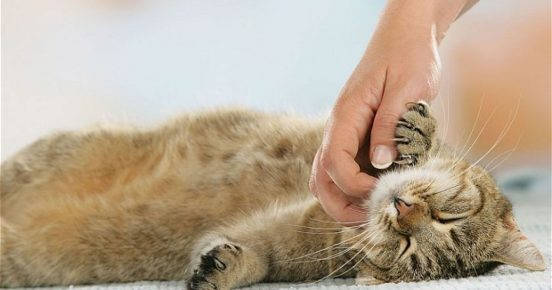
You begin to bring up the baby immediately after the period of adaptation to the new place of residence. The first and main concern at this time – accustoming him to the litter box. This should be done gently, calmly and persistently. Many cats immediately understand what they want from them and begin to accept the litter box as their litter box.
Immediately after the arrival of the kitten in the house, carefully observe him, trying to find out what kind of character the cat has. Punishment is unacceptable, even for the best of reasons. The kitten is not yet able to understand what caused its owner's displeasure, and physical pain will only cause fear or resentment.
If punished systematically, the animal will develop character traits such as aggressiveness and spitefulness. Or the opposite: the animal will become battered and fearful. In the first six months you should avoid stressful situations for the pet: noisy banquets and parties.
Recommendations for raising kittens
- Playing with the hands of the owner is unacceptable. The pet is taught to play with toys.
- In cases of aggression, seek to distract the kitten, offer him to play in the most interesting way for him.
- A friendly attitude towards the owner and non-conflict play is encouraged with treats.
- Starting at 5-6 months of age, the kitten should be taught to use the scratching post. In the future, this will avoid frustration with the pet sharpening its claws on furniture or other interior items.
- If you intend to get a second pet, it is better to do it before the pet is six months old. It is easier to accustom a kitten to the neighborhood of a dog or cat while it is small.
- If the owner is not happy with the behavior of a cat under six months of age, one effective punishment is to ignore it.
- Aggression in any form should be stopped immediately. Choose the most appropriate way for the specific situation. It can be ignoring, intimidating hissing, lifting by the scruff of the neck.
If there is a dominant person in the house among the owners, the animal will quickly enough understand this, and may begin to obey only this person. The situation can be corrected by the joint efforts of people. The one whom the cat considers to be the master should show as much attention and care to the other members of the family as possible. Soon the cat will understand the message and begin to imitate the owner without showing aggression towards the household members that are secondary to it.
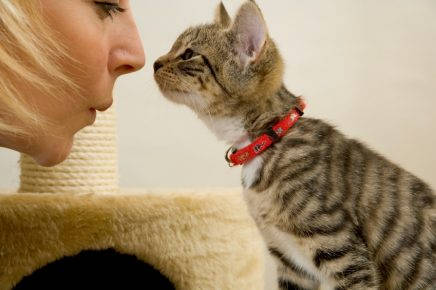
There is also such a problem as the "cult of the owner. Animals that adore their owner are ready to protect them from all dangers. Even harmless games between family members, guests, and foreign animals seem to be such to them. This problem is difficult to deal with. There are many testimonials from cat owners that this "passion" is invincible. There is one solution: you need to understand what exactly causes cat aggression and try to minimize or eliminate this factor.






